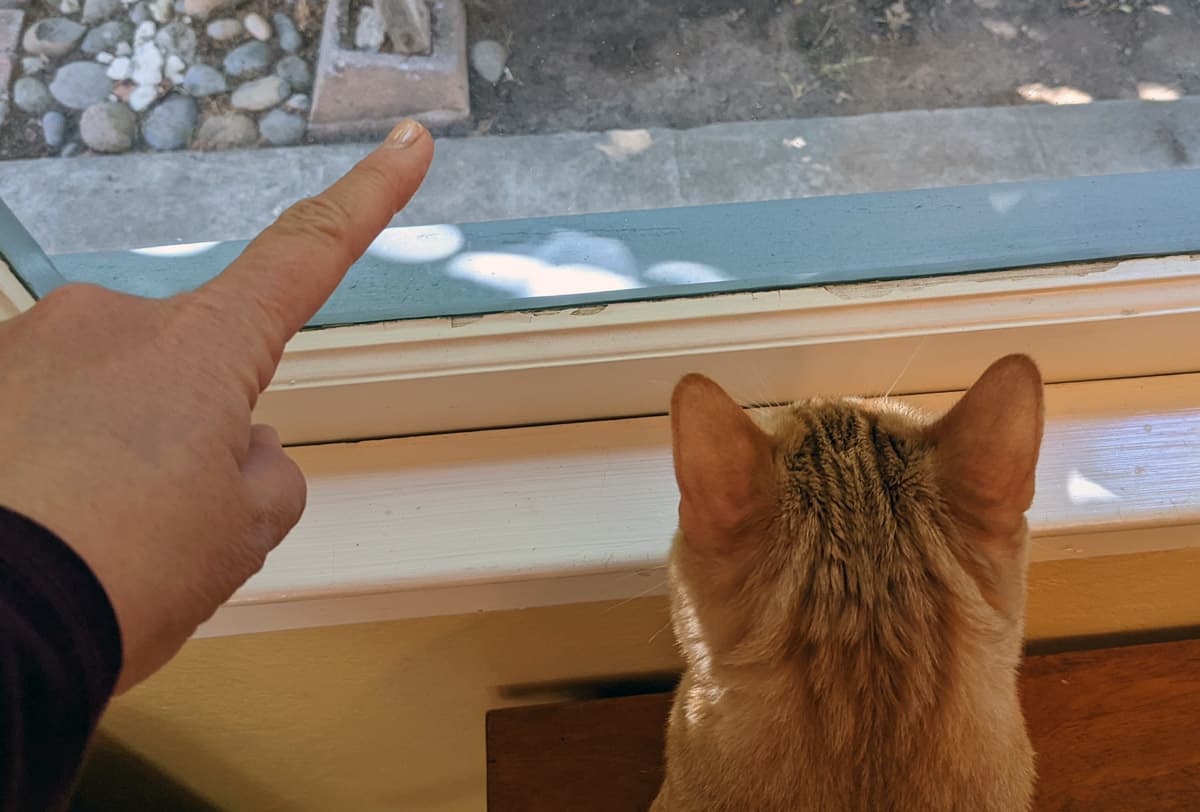Since cats have a limited ability to understand our words, one common strategy humans use to direct the attention of our pets is to point. We will point to food, to toys, and pretty much anything and anywhere we want our cats to focus on. This leads to the question, do cats understand us when we point?
The quick answer is, yes.
What the research says about how cats understand pointing
The ability to understand pointing by cats is not an inherent trait. Instead, cats learn to connect the meaning behind pointing over time. Cat’s don’t instinctively know to look where a person’ finger pointing.
Researchers have shown that cats understand pointing. [1] and [2]
One study found “no significant difference in their performance” between cats and dogs when it came to understanding point. [3] These researcher set out two bowls: one that was empty and one with food. The researchers then pointed to the bowl with food. Most of the cats in the study were able to follow the pointing cue provided by the researchers and choose the bowl with food in it.

How to teach a cat to understand pointing
It takes time but you can teach your cat to look where you are pointing. Start out by saying your cats name to get them to look at you. Then point to some treats, their food dish, or a beloved toy while saying the name of what you want them to look at.
Then walk over to the item, point again and repeat the name of the item. Encourage the cat to come over to where you are pointing and eat the food or play with the toy.
Repeat this process several times. After a while, your cat will begin to connect the action of pointing with something positive and will learn to look where you point.
Keep in mind, that with cats being the independent animals that they are, they may not always look when called upon. As one writer succinctly put it, “anyone who has owned a cat knows that they are not always as responsive as you might want them to be.”
References
[1] Mäses, M., & Wascher, C. A. (2022). Assessing cats’(Felis catus) sensitivity to human pointing gestures. bioRxiv.
[2] Vitale Shreve, K. R., & Udell, M. A. (2015). What’s inside your cat’s head? A review of cat (Felis silvestris catus) cognition research past, present and future. Animal Cognition, 18(6), 1195-1206.
[3] Miklósi, Á., Pongrácz, P., Lakatos, G., Topál, J., & Csányi, V. (2005). A comparative study of the use of visual communicative signals in interactions between dogs (Canis familiaris) and humans and cats (Felis catus) and humans. Journal of comparative psychology, 119(2), 179. DOI: 10.1037/0735-7036.119.2.179







